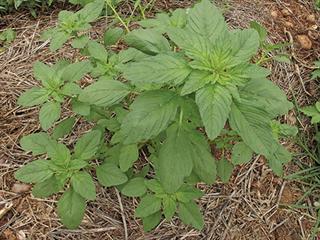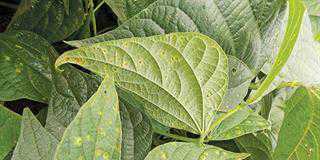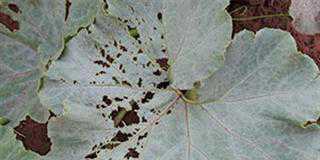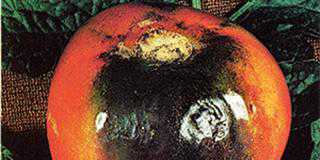
Swiss chard is our best-known spinach. It is also known as ‘spinach beet’ and is the same genus as beetroot so the two varieties readily cross with each another. Beetroot growers frequently find a wild-looking beet growing in their crop; this is a result of a cross with Swiss chard. Baby spinach is more difficult to grow than Swiss chard, and less productive.
Nonetheless, it is popular in Europe, where the climate is more favourable for its production. It does not do well in extreme temperatures. Baby spinach has a fine taste and is reputed to be effective at controlling prostate and breast cancers. In South Africa it is usually produced for the pre-pack market by specialist growers.
In the East a number of brassicas are referred to as ‘spinach’. One is komatsuna, a leafy relative of the turnip with a mild mustard flavour. I once tried a similar product, also a brassica, that went by the name of ‘vitamin greens’. It had a very mild flavour and could easily pass as spinach in South Africa. It is also fairly cold- and heat-tolerant and does not get the diseases associated with Swiss chard in rainy weather, but it is attacked by the Bagrada bug on occasion.
Nutritious amaranthus
A well-known plant related to spinach is pigweed (Amaranthus hybridus). It is highly nutritious and a friend of mine includes it in the ‘smoothie’ he consumes daily. The ancient Incas bred Amaranthus on a huge scale. This included the grain-producing varieties, which were made into a nutritious porridge. As weeds tend to be hardy and thrive, it makes sense to domesticate them and turn a weed into a crop.
Due to the hardiness and nutritional value of Amaranthus, some universities have initiated breeding programmes to create more vigorous and productive varieties to improve the nutrition of impoverished communities. Some of these have the capacity to grow a couple of metres tall and have leaves substantially larger than the norm. This makes harvesting less time-consuming.
As Amaranthus is essentially a weed that grows in the wild, it has evolved to survive grazing animals and puts out side branches when the growth point is removed. It is widely grown in Asian countries where locally adapted varieties have been developed. These are harvested for the market as well as grown for home use. Often the whole young plant is removed and sold in bunches.
I once worked for a company that tried to promote Amaranthus varieties bred by university researchers. There was enthusiasm from many quarters, but the programme collapsed when the scientists were unable to find a herbicide that would spare the Amaranthus.
Long-forgotten variety
A type of spinach commonly grown by home gardeners in this country in the past is New Zealand spinach (Tetragonia tetragoides). It has few pests, but is highly sensitive to frost, preferring hot growing conditions. The leaves are fleshy and roughly arrow-shaped, and the plant grows like a ground cover. As far as I know, seed is not currently available other than from heirloom sites. As should be clear, there are opportunities for entrepreneurs to market more exotic types of spinach in South Africa.













